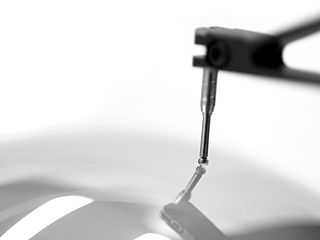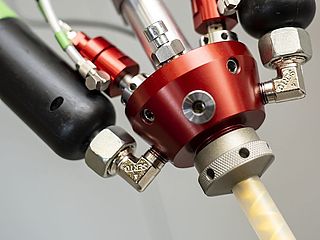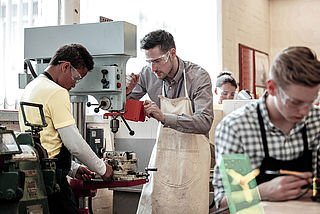Reliable contour measurements with workpiece reference point

Reference points offer fast, automatic and precise orientation of the measuring station on the component in order to measure the profile area exactly. In addition, collisions at critical measuring points with interfering edges can be avoided in this way and complex components can be measured precisely thanks to exact pre-positioning. "The use of workpiece reference points also enables reliable contour measurements in bores," explains Karl-Josef Gödecke, application engineer at Mahr. "An automatic zenith search, for example, is very easy with the measuring assistant in Level 3. In addition, the zenith search can be individually integrated into Quick&Easy programs from Mahr." A contour measuring station automatically searches for the lowest point of a profile within a predefined range, the so-called zenith point. All you have to do is bring the probe tip close to this point. From there, the drive unit automatically positions the probe arm half the measuring distance of the zenith search to the left and right. In this way, the lowest point is determined to which the probe tip is then positioned.
Contour measurements on critical components or profile areas
In a manual measurement, the probe arm is positioned at the starting point of the measurement, the zenith is set and the measurement parameters – such as the measurement distance – are entered. "For more complex components or profile sections where there is a risk of collision, it makes sense to search for exact reference points in order to carry out relative positioning from these to the exact starting point of the measurement," explains Gödecke. After the automatic reversal point search and positioning, the probe arm is lifted and then positioned at the exact starting point of the measurement. The contour measurement is then carried out with the set measurement parameters so that the exact profile area is recorded. This eliminates the need for precise and time-consuming set-up, as the measuring station automatically orients itself to the workpiece.

Automatic zenith search
The automatic zenith search is carried out with the horizontal X-axis of the drive unit and the lowest reversal point is searched for. If a motor-controlled horizontal table axis (TY) is available, the maximum point of the shaft can also be set precisely and automatically using this axis. If different measuring distances in the X and Y directions are required for the zenith search due to the component geometry, the "Automatic zenith search" command is simply executed twice in succession.
Measuring sequence of the automatic zenith search
After the workpiece or the drive unit has been positioned approximately close to the reference point to be searched for, the automatic zenith search is started. For example, the X-axis of the drive unit is moved -3.5 mm to the left from the starting point. The measurement then starts with a scanning distance of 7 mm over the lowest point. The device calculates the lowest point and the drive unit positions the probe tip exactly at the X position. All subsequent positioning is based on this reference point. Crosswise to the measuring direction, automatic adjustment to the highest point is realized with a motor-controlled TY axis, so that a fully automatic measuring sequence then takes place. With the motorized cross table CT 200 Mot, existing MarWin measuring stations can also be retrofitted easily, quickly and cost-effectively.




















